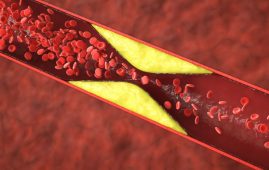

Rezdiffra (resmetirom) was approved today by the United States Food and Drug Administration for the treatment of people with noncirrhotic non-alcoholic steatohepatitis (NASH) with mild to advanced liver scarring (fibrosis) in conjunction with diet and exercise.
“Previously, patients with NASH who also had notable liver scarring did not have a medication that could directly address their liver damage,” said Nikolay Nikolov, M.D., interim director of the FDA’s Center for Drug Evaluation and Research’s Office of Immunology and Inflammation. “Today’s approval of Rezdiffra will, for the first time, provide a treatment option for these patients, in addition to diet and exercise.”
NASH is caused by the advancement of nonalcoholic fatty liver disease, in which liver inflammation can lead to scarring and liver impairment. NASH is frequently connected with various health issues, including high blood pressure and type 2 diabetes. According to one estimate, roughly 6–8 million people in the United States have NASH with mild to advanced liver scarring, and this number is anticipated to rise. Rezdiffra acts as a partial activator of a thyroid hormone receptor in the liver, reducing hepatic fat accumulation.
Rezdiffra’s safety and efficacy were assessed using a surrogate endpoint at month 12 of a 54-month randomized, double-blind placebo-controlled experiment. The surrogate endpoint assessed the level of liver inflammation and scarring. The sponsor is obliged to execute a postapproval study to verify and describe Rezdiffra’s therapeutic benefit, which will be accomplished by finishing the same 54-month trial that is now continuing. To participate in the experiment, participants had to have a liver biopsy that revealed NASH-related inflammation with moderate or severe liver scarring. In the trial, 888 patients were randomly randomized to receive either a placebo (294 subjects), 80 milligrams of Rezdiffra (298 subjects), or 100 milligrams of Rezdiffra (296 subjects) once a day, in addition to normal NASH therapy, which includes nutritional and physical activity advice.
At 12 months, liver biopsies revealed that a higher proportion of Rezdiffra-treated participants had NASH resolution or improved liver scarring than those who got a placebo. In all, 26% to 27% of participants who received 80 milligrams of Rezdiffra and 24% to 36% of those who received 100 milligrams of Rezdiffra achieved NASH resolution and no worsening of liver scarring, compared to 9% to 13% of those who received a placebo plus diet and exercise counseling.
The responses represent different pathologists’ readings. Furthermore, a total of 23% of subjects who received 80 milligrams of Rezdiffra and 24% to 28% of subjects who received 100 milligrams of Rezdiffra experienced an improvement in liver scarring and no worsening of NASH, compared to 13% to 15% of those who received placebo, depending on each pathologist’s reading. The demonstration of these changes in a proportion of patients after only one year of treatment is noteworthy, given that the disease normally advances slowly, with the majority of patients taking years or even decades to demonstrate progression.
The most prevalent negative effects of Rezdiffra were diarrhea and nausea. Rezdiffra comes with some warnings and precautions, including drug-induced liver damage and gallbladder-related side effects.
Rezdiffra should be avoided in patients suffering from decompensated cirrhosis. Patients should discontinue Rezdiffra if they experience indications or symptoms of deteriorating liver function while on the medication.
Using Rezdiffra along with some other medications, particularly statins for cholesterol reduction, may result in potentially serious drug interactions. Health care professionals should consult the entire prescription instructions for more information on these potentially serious medication interactions with Rezdiffra, as well as recommended dosage and administration changes.
Rezdiffra was authorized by the FDA under the accelerated approval process, which permits for the quicker approval of medications that treat severe illnesses and meet an unmet medical need using a surrogate or intermediate clinical outcome that is reasonably likely to predict clinical benefit. The needed 54-month trial, which is now underway, will measure clinical benefit following 54 months of Rezdiffra medication.
more recommended stories
 Children’s Health in the United States is Declining!
Children’s Health in the United States is Declining!Summary: A comprehensive analysis of U.S..
 Autoimmune Disorders: ADA2 as a Therapeutic Target
Autoimmune Disorders: ADA2 as a Therapeutic TargetAdenosine deaminase 2 (ADA2) has emerged.
 Is Prediabetes Reversible through Exercise?
Is Prediabetes Reversible through Exercise?150 Minutes of Weekly Exercise May.
 New Blood Cancer Model Unveils Drug Resistance
New Blood Cancer Model Unveils Drug ResistanceNew Lab Model Reveals Gene Mutation.
 Healthy Habits Slash Diverticulitis Risk in Half: Clinical Insights
Healthy Habits Slash Diverticulitis Risk in Half: Clinical InsightsHealthy Habits Slash Diverticulitis Risk in.
 Caffeine and SIDS: A New Prevention Theory
Caffeine and SIDS: A New Prevention TheoryFor the first time in decades,.
 Microbial Metabolites Reveal Health Insights
Microbial Metabolites Reveal Health InsightsThe human body is not just.
 Reelin and Cocaine Addiction: A Breakthrough Study
Reelin and Cocaine Addiction: A Breakthrough StudyA groundbreaking study from the University.
 Preeclampsia and Stroke Risk: Long-Term Effects
Preeclampsia and Stroke Risk: Long-Term EffectsPreeclampsia (PE) – a hypertensive disorder.
 Statins and Depression: No Added Benefit
Statins and Depression: No Added BenefitWhat Are Statins Used For? Statins.

Leave a Comment